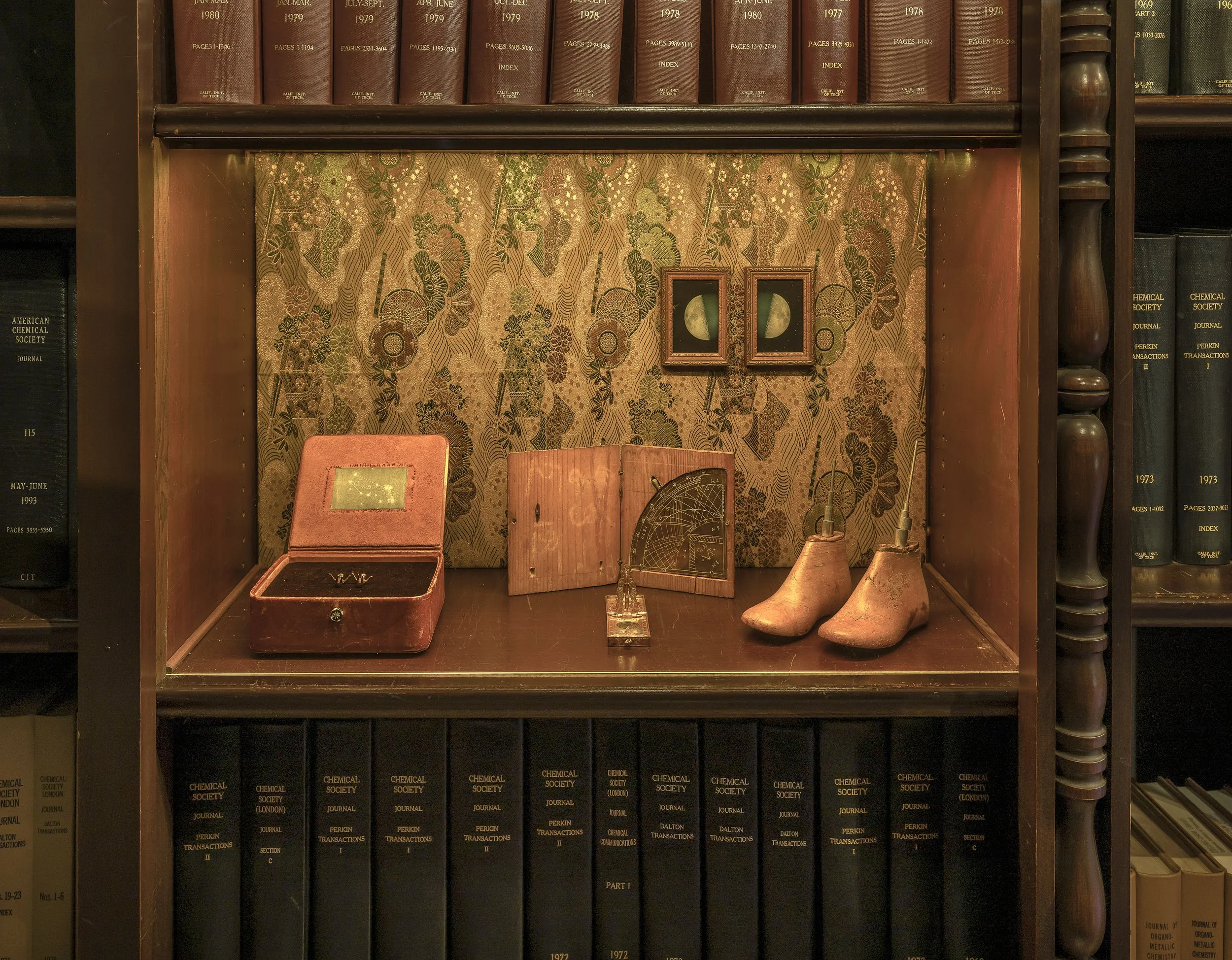Artists Unearth Universes in Caltech’s Archives
The artists in Crossing Over were inspired by a century of monumental discoveries from the scientists who have made Caltech one of the world’s most elite research institutions.
BY RENÉE REIZMAN
November 11, 2024
Jane Brucker, “Gemini + Quadrant and the Heavens” (2024), physicist Bob Hellwarth’s leather cufflink box, cast-bronze twins of Gemini, antennaed “Moon Dance,” framed “Double Blue Moon,” 16th-century quadrant and miniature pocket sundial/compass, photography by Gene Ogami.
EXCERPT
One aspect of the show that makes it a gem are the candid photographs of legendary scientists, most credited to unknown photographers. We get to see “Richard Feynman juggling at the beach” (c. 1940), a “Jack Parsons and Marjorie Cameron wedding portrait” (1948), and “Walt Disney with Roger Hayward’s moon model” (1955), as evidence that these renowned scientists were once goofy colleagues.
This thought is amplified by what may be the exhibition’s most precious objects, books by Nicolaus Copernicus, Galileo Galilei, and Johannes Kepler, all featured in the Time Stream section. The Gates Annex library, built in 1917, serves as the gallery; thick, musty journals of organic chemistry surround the artifacts. Gazing upon the etchings based on Galileo’s drawings of the moon in “Sidereus nuncius” (1610) elicited cognitive dissonance for me; these astronomers have achieved such mythic status that it’s almost impossible to imagine them as people publishing their research like any modern Caltech scientist.
Jane Brucker riffs on this sensation in her site-specific work, “Magnetic Attraction” (2024), which nestles dioramas among the stacks of books. In her carefully curated showcase of gold fragments, compasses, and eyeglasses, she uses antiques as stand-ins for knowledge that has been passed down from one academic to another. She has purposely chosen items that feel archaic, but are probably modern — like what appear to be 18th-century spectacles with the phrase “moon view” printed onto the lenses in a contemporary, sans serif typeface — to blur the lineage. The artwork was inspired by the life of her longtime friend Robert Hellwarth (1930–2021), who brushed shoulders with Nobel laureates when he was a research fellow at the university, then spent 50 years transferring research to his students at the University of Southern California.
RENÉE REIZMAN lives in Los Angeles, where she is a research-based interdisciplinary artist and writer who examines cultural aesthetics and their relationship between urbanization, law, and technology. Her writing has appeared in The Atlantic, The Awl, and Real Life Magazine.
